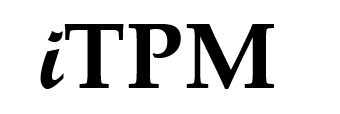The idea for this blog topic comes from a conversation at SuiteWorld 2017 last week. I was discussing the challenges of managing trade promotions when I was asked, “What is method-of-payment?”
To answer this question, let’s first step back and consider two options when we give our customers promotional discounts and allowances.
Pay the allowance now:
This is the easier way to give and financially account for trade promotion spending. Discounts and allowances are applied when creating the order or invoice. For example, a 10% discount is directly applied to the order, and the invoice subtracts the discount from the amount due. Your deal spending is directly matched to your financial transaction. What you owe is what you’ve paid. No future promotional liability. You have everything you need to financially report your trade spend. But what if ….
What if you expect your customer to do something in the future to earn your allowance or discount? In the CG industry, we call this retail performance. You may want to hold back some or all of your deal money until after you can confirm compliance with your promotional terms. That’s our next payment option:
Pay the allowance later:
Paying for the promotion later, after the transaction creates additional work and financial challenges. Let’s consider two simple questions:
How much do I owe? This sounds like a simple question, but it can get complicated for indirect accounts, and some types of allowances. Here are a few of the challenges:
- Not all sales may qualify for the discount or allowance, so you may have to estimate redemption.
- You may not directly ship to this customer, so you may not know the trade spend until after you get the claim. To validate the claim, you may need to use third-party data like IRI, Nielsen, SPINS, retailer POS, distributor sales, etc.
- If you overpay an allowance, that over-payment doesn’t reduce your promotional liability of what you owe.
How much did I pay? Again, you’d think this would be a simple to answer. To figure out what you actually paid requires all promotional settlements to be matched back to the correct promotion event, including short-pays and deductions. So why is this so difficult?
- Short-pays can be taken months after the event
- A single deducted across several invoices.
- A short-pay can be taken on invoices that don’t have products related to the promotional event.
- A single deduction can represent multiple promotions, and combined with other non-promotional expenses such as damages and fees.
- Some deductions are invalid or duplicates.
- Invalid short-pays need to be disputed and recovered by re-invoicing. Researching promotional short pays and resolving them to the proper event or chart-of-account is time consuming.
So now we get to the answer. There are essentially three method-of-payments for trade promotion:
Off-invoice: You pay the allowance NOW, and show the allowance on the invoice.
Net-Bill: You pay the allowance NOW, but you don’t show the allowance on the invoice.
Bill-Back: You pay the allowance LATER, and/or the allowance is short-paid LATER
For more info, go to our TPM blog topic from last year:
The bill-back method-of-payment is one reason CG companies need a TPM software solution to manage their trade promotion spending and allowances. If you organization uses NetSuite as your accounting package and ERP, please take a look at iTPM.
Alex Ring
President
CG Squared, Inc.
